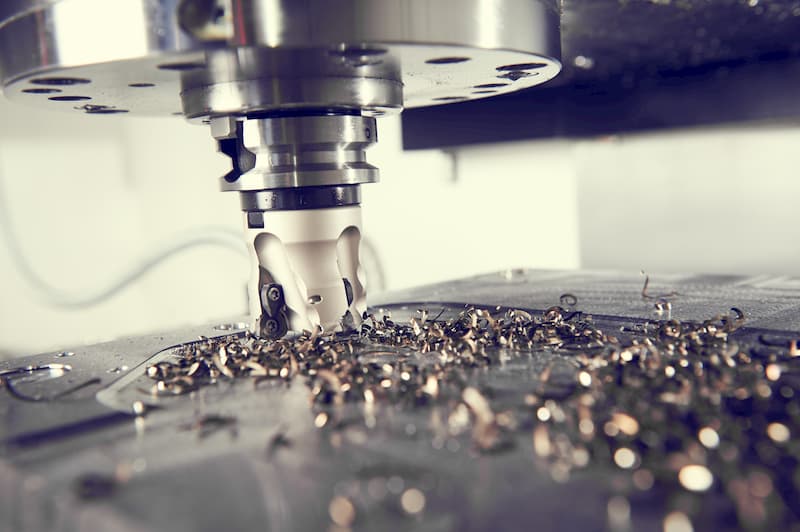The high level of precision, speed, and efficiency offered by CNC machining metal cutting has led to its widespread adoption across a variety of business sectors. However, CNC machining services can be somewhat more expensive when compared to other methods of manufacturing, and cost is a primary consideration in CNC machining for applications involving either one-off production or mass production of the same item. This article will provide you with ten suggestions that will help you cut the cost of CNC machined parts by a significant amount. One must first have a solid understanding of the factors that influence machining costs before making any efforts to cut those costs. The costs associated with manufacturing CNC tools are determined by the following four factors.
These costs include everything from the preparation of CAD and CAM files to process planning, with set-up costs being fixed and more important for low-volume production than for high-volume production. The cost of the raw materials used in the production of a part has a significant impact on the total cost of the manufacturing process as well as the cost of the part once it has been completed; the use of rare materials tends to drive up these costs significantly. Machinability is another factor that contributes to the overall cost of the material because it influences the amount of resources consumed as well as the amount of time and effort required for machining.
When it comes to CNC machining, time is literally money. Because machining time is such an important cost driver, the price of a part increases proportionately to the amount of time it takes to produce it. Machining times have a direct correlation to the cost of running and maintaining a CNC machine, as well as the amount of energy consumed and the wages paid to operators. These costs in CNC machining include anything that could be considered special requirements or extras. Examples of such requirements and extras include tighter tolerances, special tooling, tighter quality control, and slower machining speeds.
When looking at the primary elements that contribute to the overall cost of CNC machining, there are three primary ways to bring that cost down. These are design optimization, material selection, and special considerations. Out of these three, design optimization is the most essential of the three. Before deciding on a particular material, you should conduct in-depth research to establish whether or not it is the most cost-effective alternative that possesses all of the properties required for your application. Despite the fact that the quality of the material should never be compromised, not all of the properties of a material are always necessary for a given application. For instance, when machining a whistle, selecting heat-resistant steel is an unnecessary and more expensive option.
The ability of the material to be machined is an additional crucial factor to consider. Aluminum is one of those materials that is extremely machinable and should be utilized whenever it is possible to do so. Prices can vary widely depending on the type of aluminum alloy. For instance, the price of the component below, which is made of the rare aluminum 3. 1645 rather than the injection molding more common aluminum 3. 3206, will be increased by 25%. Furthermore, CNC machining will typically produce a machined surface finish that is satisfactory. This finish ought to be selected whenever it is feasible to do so because the application of multiple finishes, despite being necessary for some components, is more costly. Surface-enhancement finishes like anodizing and chemical films should only be required in cases where they are absolutely essential.
Sandblasting in one area of a part and applying a chemical film in another is an example of how applying different surface finishes to different areas of a part can significantly drive up the costs associated with producing the part. Because thin walls are fragile and require multiple passes at low depths of cut, the manufacturing process for these walls is more time-consuming. They are also likely to vibrate, which makes machining them to specified tolerances difficult and time consuming. This causes an increase in the amount of time required for machining and, implicitly, the cost of machining. Walls that are designed to be thicker help to avoid this cost. For metal, we recommend a minimum wall thickness of 0. 8 millimeters, and for plastic, we recommend 1. 5 millimeters.
It is not possible to machine a perfect interior angle of 90 degrees because the tool is cylindrical. The only way to achieve this is through EDM, lathe cutting tools which is a more expensive manufacturing process than CNC machining. It is highly recommended that you round off any interior edges that your design may have, as doing so will reduce the amount of time spent in the cutting room trying to create sharp edges. We also suggest having a radius that is sufficiently large, at least one-third as large as the cavity's depth. Small corner radii will necessitate the use of tools with small diameters. Since small tools cannot remove large amounts of material in a single pass, this will necessitate the use of multiple passes performed at slower speeds, which will increase the amount of time and money required for the machining process.
Creating deep pockets or cavities requires removing a significant amount of material, which makes them a time-consuming feature. Additionally, machining deep pockets or cavities can result in tool hang, tool deflection, and tool breakage. The end mill must be stepped down in order to avoid these cutter problems, which is the only way to do so; however, this process is very time consuming. If the cavity is designed with a minimum depth that is four times its width, all of these issues can be easily avoided. For instance, a cavity that is only 10 millimeters wide should not be any deeper than 40 millimeters. It is important to keep in mind that a cavity is considered deep if it is more than six times the diameter of the cutting tool.
Connections made through threads are very dependable; however, the most secure connections are made within the first few threads, which means that lengthy threads are not required. The machining of long threaded holes may require specialized tools in addition to an increase in both the amount of time and effort spent. When threading blind holes, you should always keep the thread depth to no more than three times the diameter of the hole. Additionally, we recommend leaving a length of at least half the hole diameter unthreaded at the bottom of the hole.

Tolerances typically increase the cost and amount of time required for machining, so they should only be specified when absolutely necessary. CNC machines are extremely accurate and produce standard tolerances whenever the design does not specify any custom tolerances. To ensure accuracy, tight tolerances should only be specified when absolutely necessary. Not only are they challenging to implement, but they also increase the amount of machining time and require more manual inspection. In addition, we strongly suggest that you utilize GD&T in your drawings. This notation allows for looser tolerances.
Standard drill sizes should be used when designing holes. Using non-standard hole sizes will necessitate the use of an end mill to finish the hillside to the specified non-standard size, which will significantly add to the amount of time required for machining. It is not necessary to include any lettering in the design that will be machined because doing so will drive up unnecessary costs and require additional time and effort to create. After the fabrication process is complete, the desired writing can be painted on the final product. However, if text needs to be included, engraved text is used because it requires less material removal than painted text.

